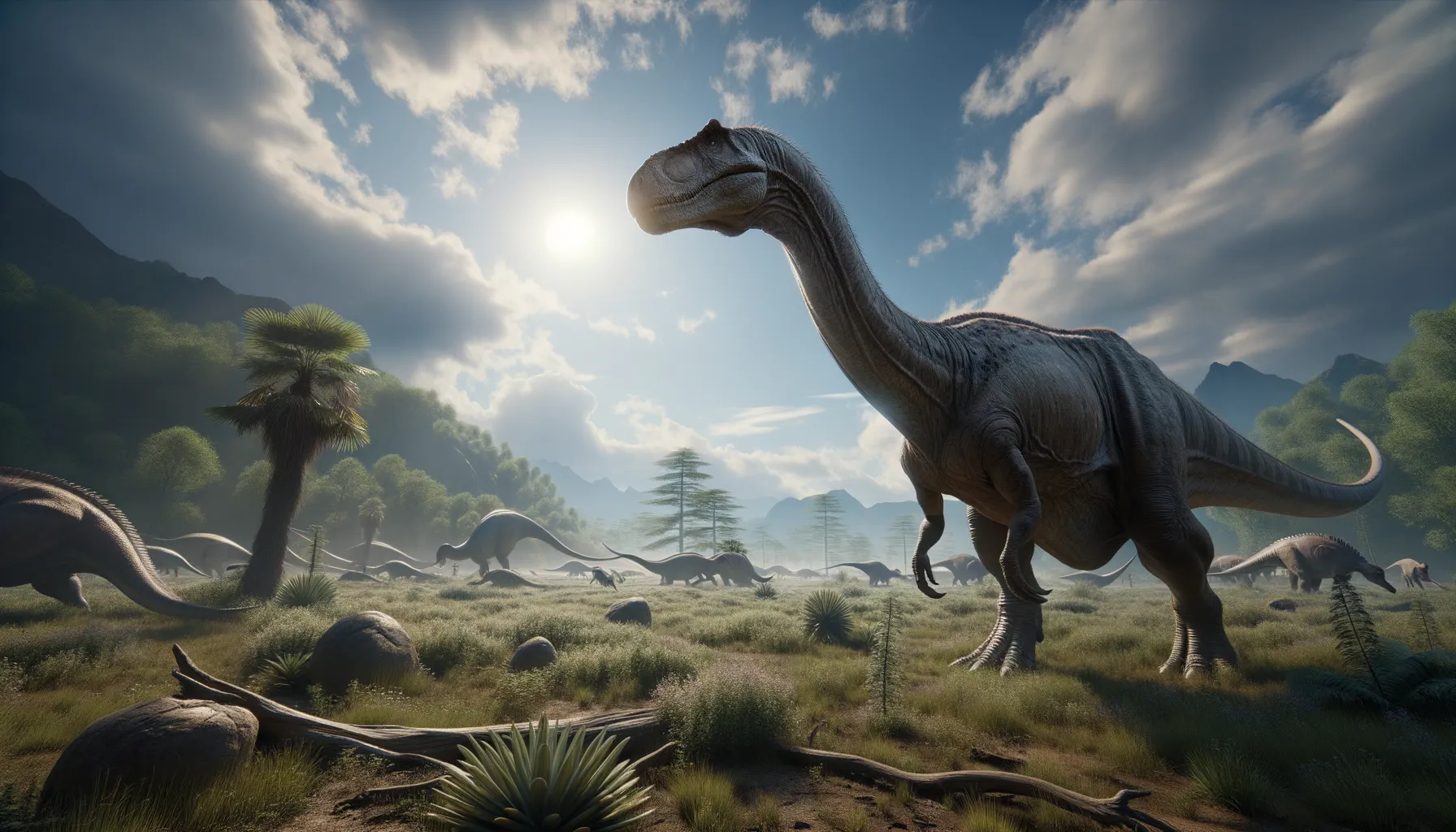
Sonidosaurus
Giant of the Gobi Desert's past!
Period
Cretaceous
Length
Estimated length of about 12 meters.
Height
Roughly 3 meters tall at the shoulder.
Weight
Estimated weight around 2,500 kilograms.
Sonidosaurus was a relatively large, plant-eating dinosaur that roamed the ancient landscapes of Asia during the Cretaceous period. Known for its long neck and tail, this titanosaur exhibited adaptations typical of the large sauropods. Fossils were first unearthed in the Gobi Desert, shedding light on the diversity of dinosaurs in that region. Despite its size, it would have relied on its massive body and communal herding to deter predators.
Diet
Sonidosaurus was a herbivore, feeding on a variety of plant material. Its diet likely included leaves, ferns, and conifers, which were abundant in its environment.
Hunting
As a herbivore, it did not hunt; instead, it foraged for plant life. Its long neck would have allowed it to reach high vegetation.
Environmental challenges
Sonidosaurus lived in a semi-arid climate with seasonal variations, which would have affected food availability. Droughts and vegetation scarcity could pose significant survival challenges. Predators were also a constant threat, especially to the young and sick individuals in herds.
Speed
Likely slow-moving due to its large size.
Lifespan
Lifespan estimates are not well-defined but may have been several decades.
First discovery
Discovered in 2004 in Mongolia’s Gobi Desert.
Fun Facts
- Sonidosaurus was a relatively small dinosaur, estimated to be about 10 meters long, which is modest compared to some of its gigantic relatives.
- This dinosaur lived during the Late Cretaceous period, roughly 90 million years ago.
- Sonidosaurus was a sauropod, meaning it was part of the same group as the famous long-necked dinosaurs like Brachiosaurus and Diplodocus.
- Fossils of Sonidosaurus have been discovered in the Gobi Desert of Mongolia, one of the richest areas for dinosaur discoveries.
- The name Sonidosaurus comes from the Sonid region in Inner Mongolia, where its fossils were first found.
- Despite its long neck and tail, Sonidosaurus had a relatively lightweight body, which helped it move efficiently.
- Paleontologists believe Sonidosaurus was a herbivore, feasting on the lush plant life that existed during its time.
Growth and Development
Sonidosaurus likely had a lengthy growth period, similar to other large sauropods. They grew from small hatchlings to giants, possibly taking decades to fully mature. Juveniles may have been more vulnerable to environmental challenges and predation.
Habitat
Its habitat consisted of open plains with scattered woodlands, where it would graze on abundant plant resources. This dinosaur favored areas where it could easily move its large body and find food. Water sources would be crucial, shaping where these massive creatures congregated.
Interaction with other species
Sonidosaurus likely shared its environment with other dinosaur species, both herbivores and carnivores. Its size would deter some predators, though smaller juveniles would be at risk. It may have formed mixed-species herds with other dinosaurs for added protection.
Natural lifespan
Sonidosaurus may have lived for several decades, typical of large herbivores.
Reproduction
Like other sauropods, it likely laid eggs in nests within communal nesting grounds. Eggs would hatch into small, vulnerable juveniles that grew rapidly. Parental care was likely minimal, with young relying on concealment and herding for protection.
Social behaviour
Sonidosaurus may have lived in herds, providing safety in numbers. Herd behavior would help in spotting predators and finding food sources. Communication within the herd could include visual signals and vocalizations.
Fossil locations
Fossils of Sonidosaurus have predominantly been found in the Gobi Desert of Mongolia. The discovery within this region highlights the area's rich paleontological significance. These fossils provide key insights into the variety of Cretaceous titanosaur species in Asia.
